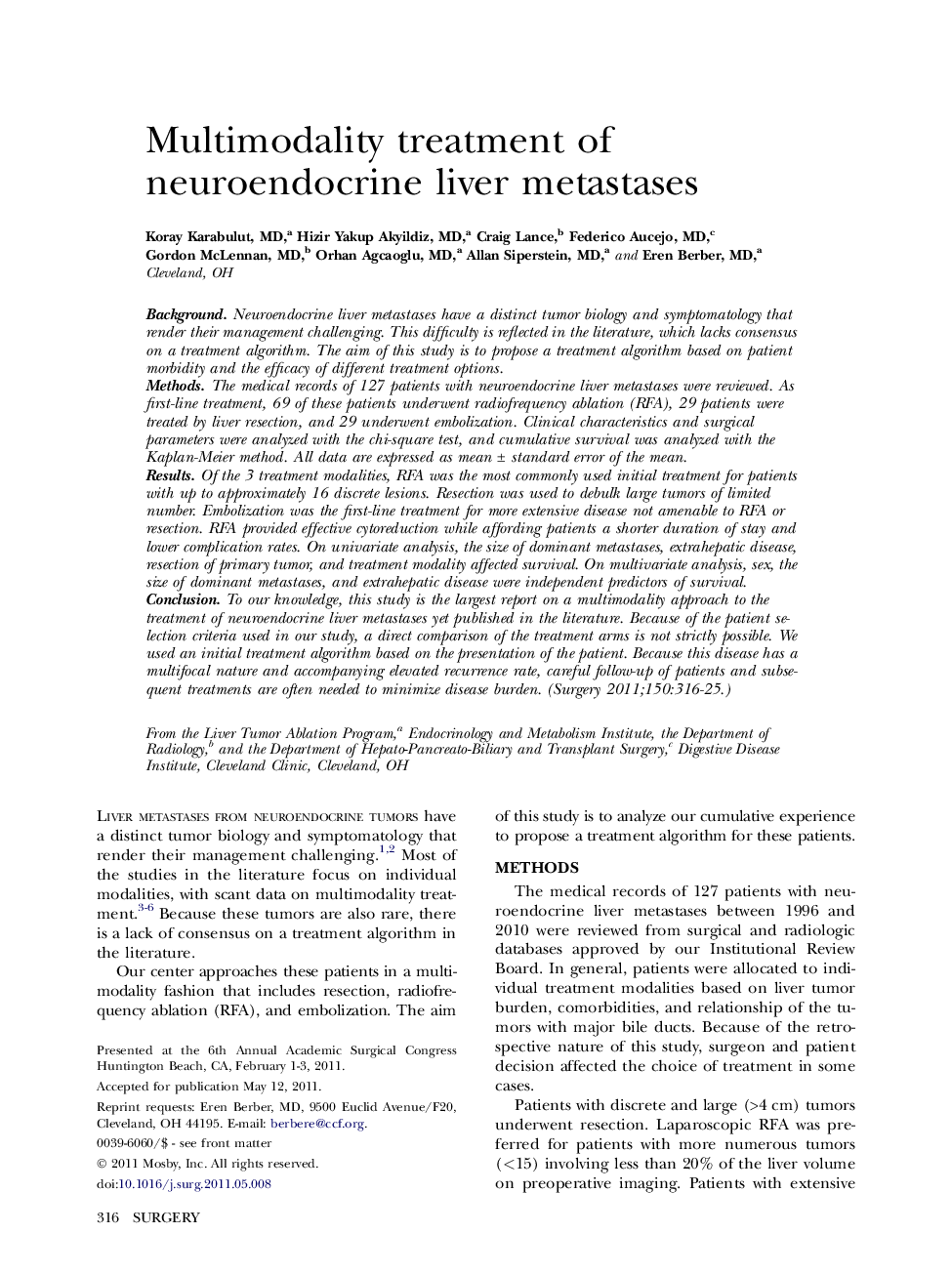| Article ID | Journal | Published Year | Pages | File Type |
|---|---|---|---|---|
| 4308814 | Surgery | 2011 | 10 Pages |
BackgroundNeuroendocrine liver metastases have a distinct tumor biology and symptomatology that render their management challenging. This difficulty is reflected in the literature, which lacks consensus on a treatment algorithm. The aim of this study is to propose a treatment algorithm based on patient morbidity and the efficacy of different treatment options.MethodsThe medical records of 127 patients with neuroendocrine liver metastases were reviewed. As first-line treatment, 69 of these patients underwent radiofrequency ablation (RFA), 29 patients were treated by liver resection, and 29 underwent embolization. Clinical characteristics and surgical parameters were analyzed with the chi-square test, and cumulative survival was analyzed with the Kaplan-Meier method. All data are expressed as mean ± standard error of the mean.ResultsOf the 3 treatment modalities, RFA was the most commonly used initial treatment for patients with up to approximately 16 discrete lesions. Resection was used to debulk large tumors of limited number. Embolization was the first-line treatment for more extensive disease not amenable to RFA or resection. RFA provided effective cytoreduction while affording patients a shorter duration of stay and lower complication rates. On univariate analysis, the size of dominant metastases, extrahepatic disease, resection of primary tumor, and treatment modality affected survival. On multivariate analysis, sex, the size of dominant metastases, and extrahepatic disease were independent predictors of survival.ConclusionTo our knowledge, this study is the largest report on a multimodality approach to the treatment of neuroendocrine liver metastases yet published in the literature. Because of the patient selection criteria used in our study, a direct comparison of the treatment arms is not strictly possible. We used an initial treatment algorithm based on the presentation of the patient. Because this disease has a multifocal nature and accompanying elevated recurrence rate, careful follow-up of patients and subsequent treatments are often needed to minimize disease burden.
